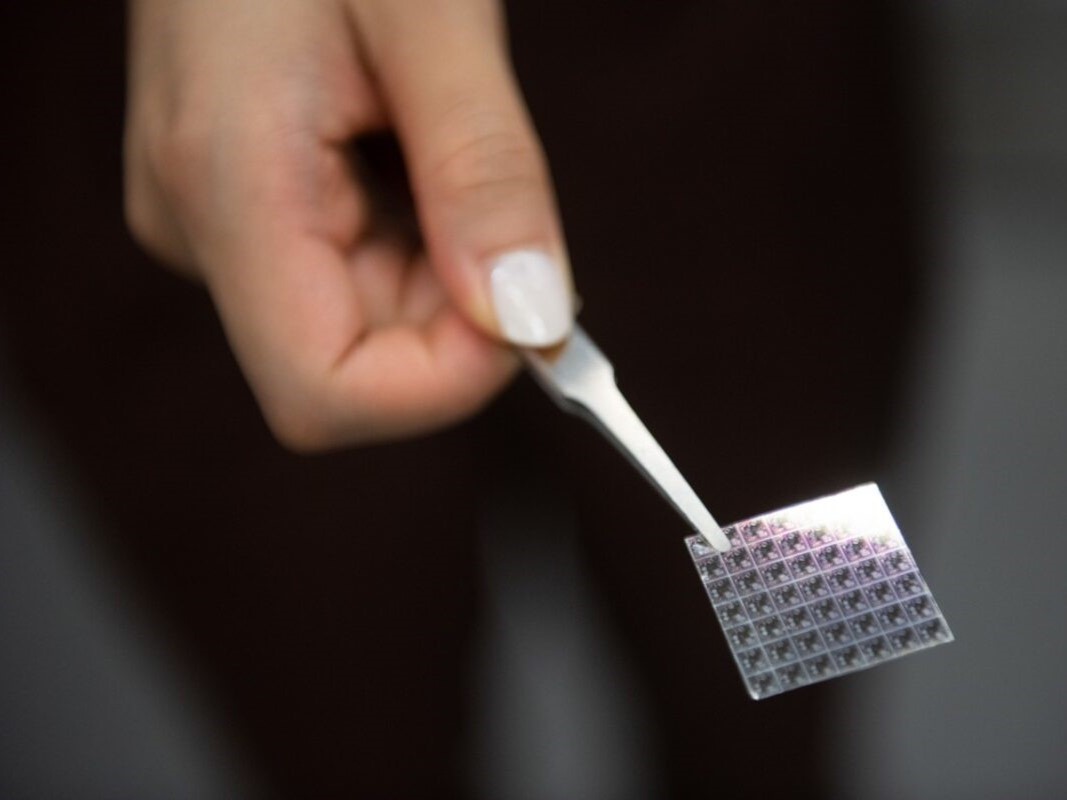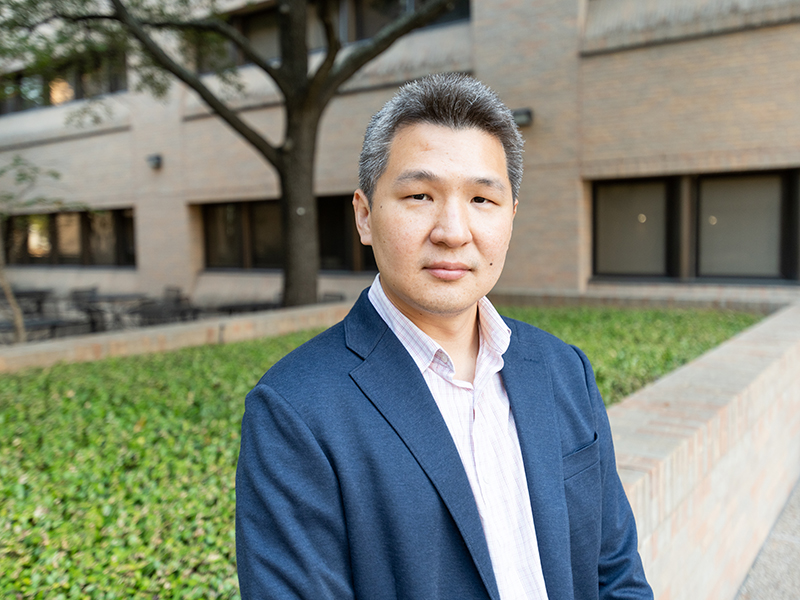
Texas Engineers will develop next-generation semiconductor technologies as part of a collaboration of the National Science Foundation and leading industry companies.
NSF and partners Ericsson, Intel Corporation, Micron Technology and Samsung awarded $42.4 million for its Future of Semiconductors (NSF FuSe2) competition. Four of the 23 projects picked for this program were either led or supported by faculty members from the Cockrell School.
“Innovation in semiconductor research is crucial to the future of our global competitiveness in modern electronics, computing and supply chains,” said NSF director Sethuraman Panchanathan. “These investments are not only supporting the future of semiconductors as a driver of our economy but also our national security. As such, we must ensure that we harness the full potential of emerging technologies and develop a skilled workforce ready to unleash new opportunities and tackle global grand challenges.”
The NSF FuSe2 awards will fund semiconductor research to drive technology forward and strengthen the U.S. semiconductor industry. They will support the broader goals of the CHIPS and Science Act of 2022 to ensure long-term global leadership in the microelectronics sector and growth in regional economies across the country. As the demand for advanced computing capabilities grows, particularly in artificial intelligence and machine learning, the need for more efficient, scalable and reliable semiconductor technologies becomes increasingly vital.
As part of their projects, the UT researchers are collaborating with faculty from seven other universities in total. Here’s a look at the four projects, what they’re trying to accomplish and who is involved:
Efficient edge inference and heterogeneous integration in systems for health and chemical sensing


Lizy John (left) and Nanshu Lu (right), professors in the Cockrell School of Engineering
Led by Lizy John, professor in the Chandra Family Department of Electrical and Computer Engineering, this project aims to integrate weightless neural networks into cardiac and chemical sensors. Artificial intelligence models are costly in terms of energy, storage and computation, making them unsuitable to integrate with resource-limited sensors.
Weightless neural networks, however, are small, fast and energy efficient, making them an excellent fit for small sensors. Improving health monitoring will lead to increased access to personalized health care, and the chemical sensing technology will advance basic scientific discovery in chemistry and molecular biology.
The team plans to contribute to training a large workforce in semiconductor technologies and involve communities underrepresented in STEM, including women, minorities and first-generation college students.
Other team members are Nanshu Lu of UT Austin’s Department of Aerospace Engineering and Engineering Mechanics, UT electrical engineer Praveen Pasupathy, Eric Anslyn of UT’s Department of Chemistry and Eugene John of The University of Texas at San Antonio.
Domain-specific probabilistic computing with stochastic antiferromagnetic tunnel junctions

Jean Anne Incorvia, associate professor in the Cockrell School of Engineering’s Chandra Family Department of Electrical and Computer Engineering
This team, which includes electrical and computing engineer Jean Anne Incorvia, is working to fundamentally rethink the architecture of computing systems. Typical methods require too much energy to continue scaling and struggle to solve important problems.
The research focuses on improvements in probabilistic (p-) computing. The goal is to make it more energy efficient through the development of p-bits based on a new type of magnetic device, referred to as an antiferromagnetic tunnel junction. These devices have inherently faster dynamics than existing magnetic p-bits, making them excellent candidates for p-bit implementation.
The researchers will work together to develop a new course focusing on emerging materials for next-generation computing. They also aim to collaborate with university colleagues and external professional societies to provide opportunities for high school, undergraduate and community college students to gain exposure to scientific research and training in magnetism and advanced computing.
Led by Pedram Khalili Amri of Northwestern University’s McCormick School of Engineering, the team also includes Incorvia, Joseph Friedman of The University of Texas at Dallas’ Department of Electrical and Computer Engineering and Kerem Camsari of the University of California Santa Barbara‘s Department of Electrical and Computer Engineering.

Chih-Hao Chang, professor in the Cockrell School of Engineering’s Walker Department of Mechanical Engineering
This group, which includes Chih-Hao Chang of the Walker Department of Mechanical Engineering, will establish a groundbreaking framework to develop new materials for advanced computer chips. This project will use indium-based materials to co-design two key aspects of chip manufacturing: materials used to create tiny chip features and the transistors (miniature switches) on these chips that enable them to do computing.
The new materials will be designed for extreme-ultraviolet patterning to produce smaller, more precise features on chips, leading to better performance and energy efficiency. Additionally, a novel low-temperature method will convert these features into high-performance transistors, potentially reducing production costs and environmental impact.
The project will also include a workforce development program to train community college students for careers in the semiconductor industry, addressing the growing need for skilled technicians in North Texas. Collaborations with industry partners will provide students with hands-on experience and career opportunities in this crucial field.
Julia Hsu of The University of Texas at Dallas‘ Erik Jonsson School of Engineering and Computer Science is leading the project. She is joined by UT Dallas colleagues in materials science and engineering Cormac Toher and Kevin Brenner, as well as Chang and Howard Katz of Johns Hopkins University‘s Department of Materials Science and Engineering.


Cockrell School of Engineering professor Jamie Warner (left) and associate professor Yuanyue Liu (right)
This project aims to improve the capabilities of interconnects, which are layers of metal conductors, typically made of copper, that connect the different pieces of a computer chip. When these copper-based interconnects shrink below 10 nanometers in size, their performance falls off.
The researchers aim to develop a new way to synthesize copper nanowires and design effective encapsulation layers based on two-dimensional materials. These would break through the limits of current interconnect technology and enable next-generation high-performance and energy-efficient computer chips.
Research in this highly interdisciplinary project is integrated with education and workforce development. The project engages students at all levels, providing training in physics, materials science and nanoelectronics. Investigators will closely collaborate with industry, government and education partners to cultivate future technology leaders and incubate technology.
The research is led by Yuxuan Cosmi Lin of Texas A&M University‘s Department of Materials Science and Engineering. Jamie Warner, director of the Texas Materials Institute at UT and professor in the Walker Department of Mechanical Engineering, his mechanical engineering colleague Yuanyue Liu and Zhihong Chen and Sumeet Gupta of the Elmore Family School of Electrical and Computer Engineering at Purdue University round out the team.
